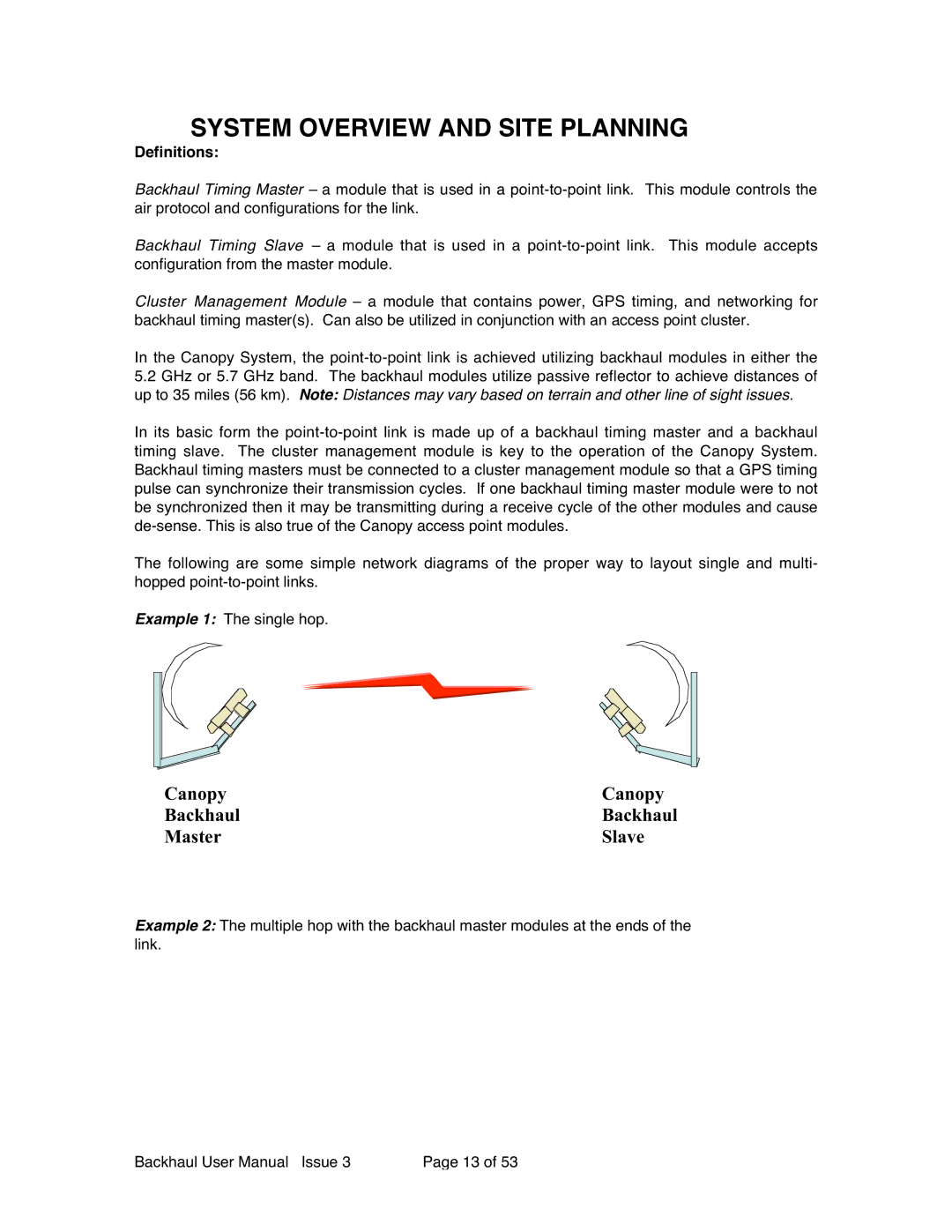
SYSTEM OVERVIEW AND SITE PLANNING
Definitions:
Backhaul Timing Master – a module that is used in a
Backhaul Timing Slave – a module that is used in a
Cluster Management Module – a module that contains power, GPS timing, and networking for backhaul timing master(s). Can also be utilized in conjunction with an access point cluster.
In the Canopy System, the
5.2GHz or 5.7 GHz band. The backhaul modules utilize passive reflector to achieve distances of up to 35 miles (56 km). Note: Distances may vary based on terrain and other line of sight issues.
In its basic form the
The following are some simple network diagrams of the proper way to layout single and multi- hopped
Example 1: The single hop.
Canopy | Canopy |
Backhaul | Backhaul |
Master | Slave |
Example 2: The multiple hop with the backhaul master modules at the ends of the link.
Backhaul User Manual Issue 3 | Page 13 of 53 |
